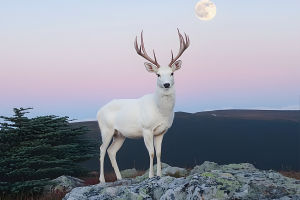When we think about the vast ocean and the creatures that roam its depths, one of the most fascinating and graceful beings is the Mobula. Also known as the devil ray, this magnificent creature can reach lengths of up to 8 meters and weigh more than 1 ton.
Its flat body, resembling wings, enables it to glide gracefully through the waters. With unique features like the two ear-like protrusions in front of its pectoral fins, the Mobula stands out in the oceanic world. Today, let’s dive into the world of Mobula fish and explore its characteristics, behavior, and some surprising facts!
DESCENDING 4K | S1 E12 | The Giant Manta Rays
video by THE DEPARTURES CHANNEL
Physical Characteristics: The Elegant Design of the Mobula
The Mobula's appearance is often compared to that of the Manta ray, yet it has its distinct characteristics. These fish are flat, with powerful pectoral fins that resemble wings, making them look like flying creatures of the sea. Their wide, triangular bodies and gentle movements are quite mesmerizing to watch. The most unique feature, however, is the two small, ear-like protrusions on their heads, just in front of their pectoral fins. These protrusions are thought to help with feeding, as they funnel plankton and small fish directly into their mouths.
The Mobula’s teeth are tiny, and it feeds mainly on plankton and small fish, making it a filter feeder. Its gentle nature and graceful swimming style have earned it the nickname “angel of the sea.”
Mobula vs. Manta: What's the Difference?
For many years, the Mobula and Manta were considered two separate species, each belonging to different genera. However, recent DNA testing has confirmed that both creatures belong to the same genus, Mobula. Despite their similarities in appearance, the two differ in size, with Manta rays typically being larger. But overall, both are part of the same family of rays, called Myliobatidae.
Mobula's Feeding Habits: A Plankton Lover
Mobulas primarily feed on plankton, which includes tiny fish and small invertebrates. They swim through the ocean with their mouths open, filtering out food from the water. This process of feeding is similar to how a whale or other filter feeders collect food. By swimming through plankton-rich waters, the Mobula sustains itself while gracefully gliding through the sea. It's truly an efficient way of feeding, and it highlights just how perfectly adapted these creatures are to their environments.
Where to Find Mobulas
Mobulas are commonly found in tropical and subtropical waters around the world. They tend to inhabit coral reefs and coastal areas, where food sources are abundant. The waters near the Indo-Pacific regions, such as the coasts of Australia, Mexico, and the Philippines, are particularly well-known for being home to these magnificent creatures. When traveling to these regions, diving or snorkeling with Mobulas can be a breathtaking experience.
Mobula's Gentle Nature
One of the most fascinating aspects of the Mobula is its temperament. Despite their large size, these creatures are known for their gentle and peaceful nature. They do not pose any threat to humans and often swim alongside divers and snorkelers without fear. Their calm and graceful movements make them one of the most enjoyable sea creatures to observe. They are often described as “gentle giants” of the ocean.
Interesting Facts about the Mobula
Here are a few fun and surprising facts about Mobulas that you may not know:
Social Creatures: Mobulas are often seen in large groups. These groups, or “schools,” can consist of hundreds of individuals. Swimming together in these groups helps them protect each other from predators and may even help in feeding as they all gather in the same areas.
Mating Displays: Male Mobulas are known to perform acrobatic displays during the mating season. They leap out of the water, creating a spectacular show for those lucky enough to witness it. These displays are thought to attract potential mates.
Life Span: The life expectancy of a Mobula is typically around 10 to 12 years, though some have been known to live even longer in certain environments.
The Enduring Mystery of the Mobula
The Mobula is truly a remarkable creature. From its graceful swimming style to its gentle nature, this fish has captivated the hearts of ocean enthusiasts around the world. As we continue to explore the vast oceans, there’s still so much to learn about this magnificent creature. Whether you’re diving in the crystal-clear waters of the Indo-Pacific or simply watching documentaries about the ocean, the Mobula is a testament to the beauty and mystery of marine life.
To all the ne, let’s continue to marvel at these beautiful creatures, protect their habitats, and ensure that future generations get to experience the wonders of the Mobula!


